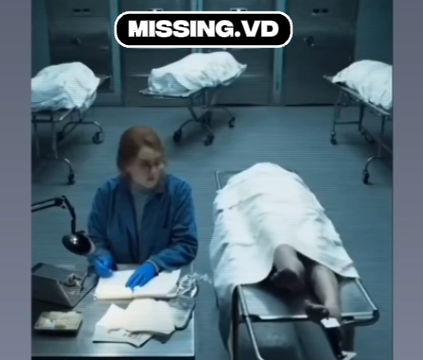On a crisp September morning in 2005, 24-year-old nurse Emily Carter left her Anchorage home for what was supposed to be a peaceful solo hike through Alaska’s Chugach National Forest. The forest’s vast beauty had always called to her—a sanctuary of towering pines, glacial streams, and quiet trails she knew better than most. Emily had grown up exploring the wilderness with her parents, both nature lovers who taught her to respect the power and unpredictability of the outdoors. Clad in her navy jacket, sturdy hiking boots, and gray backpack, Emily looked every bit the experienced adventurer she was. Yet this journey, intended to clear her mind after grueling hospital shifts, would become one of the most haunting mysteries in Alaska’s history—a disappearance that left her family grasping for answers for years.

Emily’s connection to the wild was more than passion—it was part of her identity. Her father, John Carter, had spent decades teaching climbing and survival skills, while her mother, Susan, was a biology teacher known for leading school wilderness expeditions. Camping under starlit skies, foraging along rivers, and scaling rugged ridges were family traditions. By her late teens, Emily could navigate the dense Chugach trails as easily as she could her own neighborhood. Even after beginning her nursing career, she often escaped into nature to recharge. “The forest makes everything make sense again,” she once told her best friend, Rachel Thomas. In September 2005, after a string of intense ICU shifts, Emily mentioned to Rachel that she planned a solo weekend hike along the Pine Ridge Trail. She promised to return by Sunday evening.
On September 22, Emily packed her essentials and drove her red Subaru Outback to the trailhead. Gas station footage in nearby Palmer showed her refueling, buying snacks, and asking about weather conditions. At 10:30 a.m., she signed the trail log, estimating a three-day hike. Other hikers later reported seeing her the next afternoon descending from a scenic overlook—smiling, calm, and alone. That was the last confirmed sighting of Emily Carter.
When she failed to appear for work on Monday, concern quickly escalated into panic. Her supervisor contacted her parents, and soon, a full-scale search was underway. Emily’s Subaru was found neatly parked and locked at the trailhead. Inside were her sunglasses, a half-empty water bottle, and an untouched first-aid kit. Rescue teams scoured the forest by air and ground, but heavy rain had erased tracks and scent trails. A single energy bar wrapper—matching her gas station purchase—was discovered near the overlook. Despite weeks of effort, the search yielded no further clues. Emily seemed to have vanished into thin air.
The case soon grew more complex. Detectives discovered Emily had recently been in touch with Brad Morrison, a local hiking guide with a questionable reputation. His alibi for that weekend unraveled during questioning, yet no physical evidence linked him to Emily’s disappearance. Police learned Morrison had a history of harassment allegations, but lacking proof, they could not charge him. Then, in a chilling twist, Morrison himself disappeared months later. His pickup truck was found abandoned on a remote logging road, keys and wallet inside. Authorities hinted at suicide, but Emily’s parents were unconvinced. They believed Morrison’s disappearance suggested he was either running—or silenced.
For five years, Emily’s case grew cold. Her parents never stopped searching, posting flyers, and maintaining contact with investigators. Locals whispered theories—animal attack, accident, abduction—but none fit the puzzle. Then, in autumn 2010, the forest finally yielded its secret.
Two hunters exploring near the old Pine Ridge overlook stumbled upon human remains entangled beneath the sprawling roots of a pine tree. Alongside them lay a navy jacket and gray backpack. Forensics later confirmed the remains were Emily’s. But what investigators found next transformed a tragic recovery into something far more sinister.
Emily’s ribs and skull bore precise, shallow cuts made with a sharp instrument, suggesting deliberate harm rather than an accident. Her wrists were bound behind her back with rusted wire. A sticky residue identified as a plant-based adhesive—commonly used in animal snares—marked her jacket. Tucked among her belongings was a small wooden carving of an animal, intricately shaped and unmistakably crafted by a left-handed person.
The disturbing details didn’t end there. Detectives soon connected Emily’s case to other unsolved disappearances in Alaska’s backcountry. In the workshop of a missing craftsman named Walter Hines, known locally for his left-handed carvings, police discovered a weathered map dotted with red crosses marking secluded forest sites. Excavations at those coordinates uncovered three additional victims. One was identified as Brad Morrison, whose remains showed identical injuries and bindings. Each site contained a hand-carved wooden figurine, carefully placed near the body.
Experts proposed that these killings weren’t motivated by robbery or passion but by ritual. The markings, positioning, and consistent craftsmanship suggested an individual driven by obsession—someone who sought control or transformation through his victims. Hines quickly became the primary suspect. Yet, like the others, he was never found. Some believed he fled into the wilderness; others speculated he became another victim of his own madness.
The revelations shook Alaska’s outdoor community. Trails once bustling with hikers grew quiet as locals avoided the dense pine groves near the discovery sites. Safety advisories urged solo hikers to file detailed itineraries and carry emergency beacons. The story of Emily Carter became both a tragedy and a warning—a reminder that nature’s beauty can sometimes conceal its darkest secrets.
For the Carter family, the discovery brought bittersweet closure. They finally knew what had happened to their daughter, but the unanswered questions—why her, why the carvings, and what drove the killer—remained unbearable. Emily’s mother described her daughter as “fearless yet gentle, the kind of person who would stop to rescue an injured bird on her way to work.”
Today, Emily’s story is retold as a sobering lesson for all adventurers. It emphasizes the importance of preparation, situational awareness, and trusting one’s instincts when venturing into remote areas. While Chugach National Forest still draws countless hikers, a quiet monument now stands near the Pine Ridge trailhead in Emily’s memory. The inscription reads: “For those who seek peace in the wild, may you walk safely and return home.”
Emily Carter’s life embodied compassion, resilience, and an enduring love for the wilderness. Though her journey ended in tragedy, her story continues to remind others that even the most breathtaking places can harbor hidden dangers. Her legacy endures—not as a tale of fear, but as one of courage and respect for the unpredictable power of nature.





